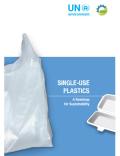This resource is also available in English.
The Scaling Citizen Action on Climate: ANT Financial's efforts towards a digital finance solution report shows that almost half of Ant Financial Services Group’s 450 million users signed up to Ant Forest, an app that gamifies carbon footprint tracking – cutting greenhouse gas emissions and demonstrating the massive potential of Fintech (financial technology) for supporting sustainable development. By the end of January 2017, the approach had avoided 150,000 tonnes of carbon dioxide emissions, thanks to the accumulation of small behavior changes, with much more to come.
The Inquiry's Annual Overview 2017 provides a summary of our work on aligning the financial system with sustainable development during 2017, divided in four themes: Country engagement; International collaboration; Cross-cutting themes: Green Invest and Green Digital Finance Alliance; Selected events
This Financing the Transition paper presents a fictional Fast Track scenario, suggesting the key features of how a rapid transition to a low-carbon, resilient economy could play out in the financial system in terms of impacts on assets as well as on financial policy.

This report sets out the latest thinking on how we can more sustainably manage and curb single-use plastic pollution. It looks at what governments, businesses and individuals have achieved at national and sub-national levels to curb the consumption of single-use plastics. It offers lessons that may be useful for policymakers who are considering regulating the production and use of single-use plastics.

The Raising Risk Awareness (RRA) project uses the latest advances in climate science to understand the role of climate change in the occurrence of extreme weather events in developing countries. The project also considers how such information is communicated between those who undertake the analyses (scientists), those who disseminate the information (media and communicators) and those who ultimately incorporate this information in decision-making (policy-makers). This report provides a summary of the project’s results and learning.
